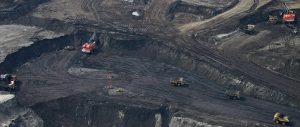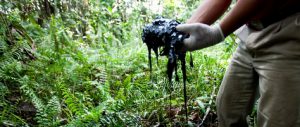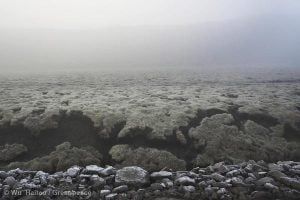Stephen Harper, Canada’s prime minister, arrives in Beijing tomorrow with a very specific goal: to secure a market for the further exploitation of Canada’s oil sands, a project that he once likened to the building of the Great Wall of China, “only bigger”.
Following widespread environmental protests, the US government two weeks ago denied a permit to the would-be builders of the US$7 billion (44 billion yuan) Keystone XL pipeline: a plan to pump crude oil from Canada’s oil sands, in the south-western province of Alberta, down the length of the United States to refineries in Texas. Now, with that plan scuppered by Canada’s southern neighbour, Harper has a renewed interest in selling oil to Beijing.
Anxieties about local ecological damage and concern about global climate change have driven opposition to the exploitation of Canada’s oil sands for years. The latest development, Canada’s proposed Northern Gateway pipeline, would increase exports of this “dirty” oil to China by over 50 times. But the strong environmental lobby in the United States may mean that Canada is now more willing to face considerable hurdles back home to export to what it hopes to be a more tractable Chinese market.
Canada holds the second-largest oil reserves in the world after Saudi Arabia. But because the oil is trapped in a highly viscous mixture of bitumen, sand and clay, it requires an extraction process much more water and energy-intensive and harmful to local ecology than conventional oil.
Shallower oil sands deposits are harvested by open-pit mining, first cutting down forest and removing an average of four tonnes of sand and soil per barrel of oil, which disturbs the ecology of surrounding areas including bogs, rivers and boreal forest. Deposits buried deep below the surface require an even more environmentally harmful in-situ practice: heating the mixture, usually through steam and oil, until it is fluid enough to be pumped out through a well.
After removal, each barrel of oil requires several barrels of water, which is heated to separate the bitumen from the sand. Contaminated water is discharged into tailings ponds, areas where waste-water is stored to allow solid particles to separate from the liquid. During this whole process, somewhere between 1.5 and four units of water are used for every unit of oil extracted, in addition to recycled water.
All of this is done before the refining process that is also required for conventional oil. Together, it leaves an indelible blemish, on not only the local landscape, but also the air, water and possibly even local health.
Chinese companies have been investing in Canada’s oil sands since 2005 and, according to the Houston Chronicle, have injected around US$15 billion into Alberta alone over the past 18 months. Canada currently exports only 10,000 barrels of oil per day to China. The Northern Gateway pipeline would increase capacity 525,000 barrels of oil per day.
If approved, the proposed pipeline would take oil-sands crude west from Alberta and pass through mountainous British Columbia (BC), an area recognised for its majestic natural landscapes and home to 50 of Canada’s First Nations or Aboriginal groups. In the north-west coast of BC, the oil would be put on supertankers bound for Asia.
China is considered the biggest potential buyer of this oil as the country seeks to satiate its expanding appetite for energy. The International Energy Agency predicts that Chinese energy demand will soar 75% by 2035, accounting for more than a third of the growth in global consumption.
However, even if China is a willing client, domestic politics will likely mean a slow response from Canada. As in the United States with the Keystone XL pipeline, Canada will have to first assuage environmental opposition, and it will also have to determine how to respond to land claims from many native peoples.
Members of parliament, government bodies and environmental groups, while for the most part being in favour of “responsible oil sands development”, have all been outspoken about the need to implement effective environmental management systems, in particular for land, air and water resources around the oil sands. Many also argue that this is necessary for a predictable, stable investment climate.
The cumulative effects on the area’s watersheds are unknown, but several independent, government-recognised studies (compiled here) reference the need for better water monitoring systems at both the provincial and federal level. Environmentalists also argue that there is no regional plan that sets acceptable limits on oil sands’ ecological disturbance and protects threatened species in the oil sands area.
Opposition to the Gateway pipeline has been buttressed by a December 2011 report to parliament conducted by the Commissioner of the Environment and Sustainable Development (the Canadian government’s primary independent auditor) that prompted serious safety concerns over the way the government’s energy regulator manages pipelines.
Further opposition to the Gateway is found in a report by the Pembina Institute, an environmental group that advocates responsible oil sands development, which includes a recommendation to reject the proposed pipeline and institute a ban on large oil tanker traffic off British Columbia’s coast. A tanker ban was put forward in a parliamentary bill just last year, and has been publicly supported by all federal parties in Canada with the exception of the Conservative government in power. If passed, such a bill would interfere with the 225 oil supertankers expected to connect Chinese markets to the Gateway pipeline.
Public hearings on the pipeline proposal began in early January and have already attracted over 4,000 people to participate in the consultation process, which will last for 1.5 years. The main issues raised will likely include the environmental impacts of oil sands production, the risk of a pipeline spill or tanker accident at sea and the accuracy of proposed economic benefits. Many participants are members of First Nations groups, there to protect their land claims, a barrier to the proposed pipeline that the Canadian government has already recognised.
Linda Duncan, head of environment policy for Canada’s second most powerful political party, the New Democrats (NDP), told chinadialogue that “our trading partners need to be aware that there will be clear opposition” when it comes to streamlining the Northern Gateway pipeline as Harper is now interested in doing.
Harper’s Conservative party Natural Resources Minister has argued that it is primarily “environmental and other radical groups” that will provide much of the opposition to the Northern Gateway, arguing that the process is being “hijacked” by foreign interests to “undermine Canada’s economy”.
This is not the first time such arguments have been raised against environmentalists, including in China. But Duncan insists the reality is that the Canadian government is “absolutely not responsive” to the democratic demands of Canadians for environmental protection. Environmentalists also argue that, as so many environmental problems transcend national boundaries, they will require an international response.
Indeed, many in the international community are very critical of the current Canadian government’s dismal environmental record. In 2011, a coalition of environmental groups awarded the Canadian government the fifth “fossil of the year” award for its poor record on climate-change action after pulling out of the Kyoto Protocol, the international climate treaty to tackle climate emissions adopted in 1997, and has been the target of repeated criticism by Canadian green groups for its poor environmental policy.
Canada is already one of the highest per-capita greenhouse-gas emitters in the world. The oil sands currently only represent 6.5% of the country’s total emissions, but the Pembina Institute estimates that future increases are expected to come “almost solely” from oil sands, and states that “efforts to constrain these emissions is out of step with Canada’s climate commitments.”
It is also clear that oil sands are more carbon intensive than conventional oil, although how much more depends on the measurement technique. Some calculate emissions disparities from extraction through to refining (“well to tank”), where oil sands oil is estimated to be three to five times more carbon intensive than conventional oil.But in a “well to wheels” calculation, which includes emissions all the way to the cars’ exhaust pipes, oil sands are only 5% to 15% dirtier, according to Cambridge Energy Research Associates,an environmental consultancy group. In other words, most of the carbon emissions still come from burning the oil, not extracting it.
But building infrastructure like oil pipelines creates a “lock-in” effect, which according to a study by the International Energy Agency, would set out a high-carbon energy growth path for decades to come.
“Are we going to get serious about alternative energy, or are we going to go down the unconventional-oil track?” asked Simon Dyer of the Pembina Institute, cited in National Geographic. “The fact that we’re willing to move four tonnes of earth for a single barrel really shows that the world is running out of easy oil.”
Environmentalists argue the Gateway pipeline is a path toward further global reliance on fossil fuels. Prioritising oil over renewable energy will ultimately carry a heavy environmental price, and it is future generations that will pay.
Canada will likely remain eager to diversify its trade basket through increasing cooperation with China. But if China is interested in importing more Canadian crude oil, it must be prepared to deal with the political and environmental realities of its partner. If there’s a message to be taken from Keystone XL, it’s that trading partners may underestimate environmental voices – and do so at their own peril.
Angela Merriam is a Canadian environmentalist and educator based in Beijing. She currently works with the local NGO Green Earth Volunteers and teaches a class on social change in China through CET Academic Programs.
Homepage image by Greenpeace/ Jiri Rezac


